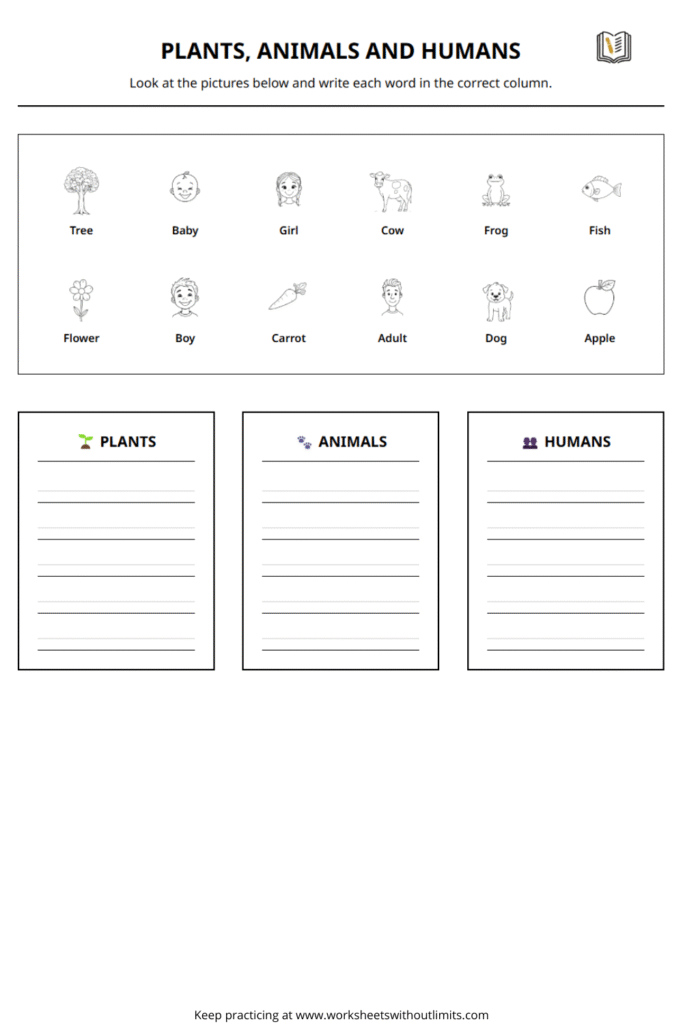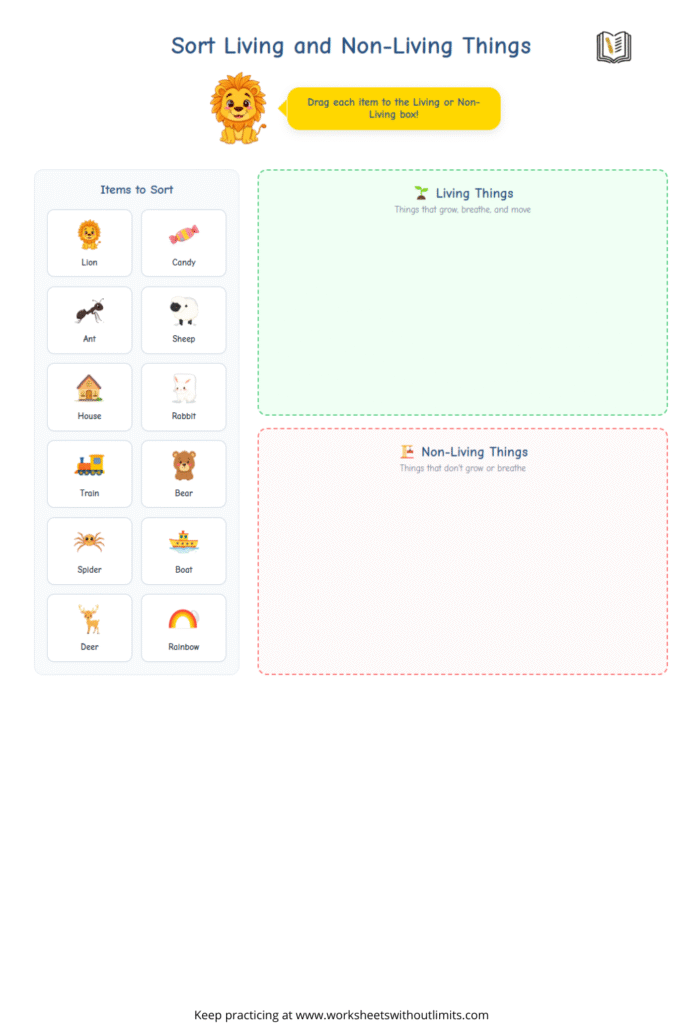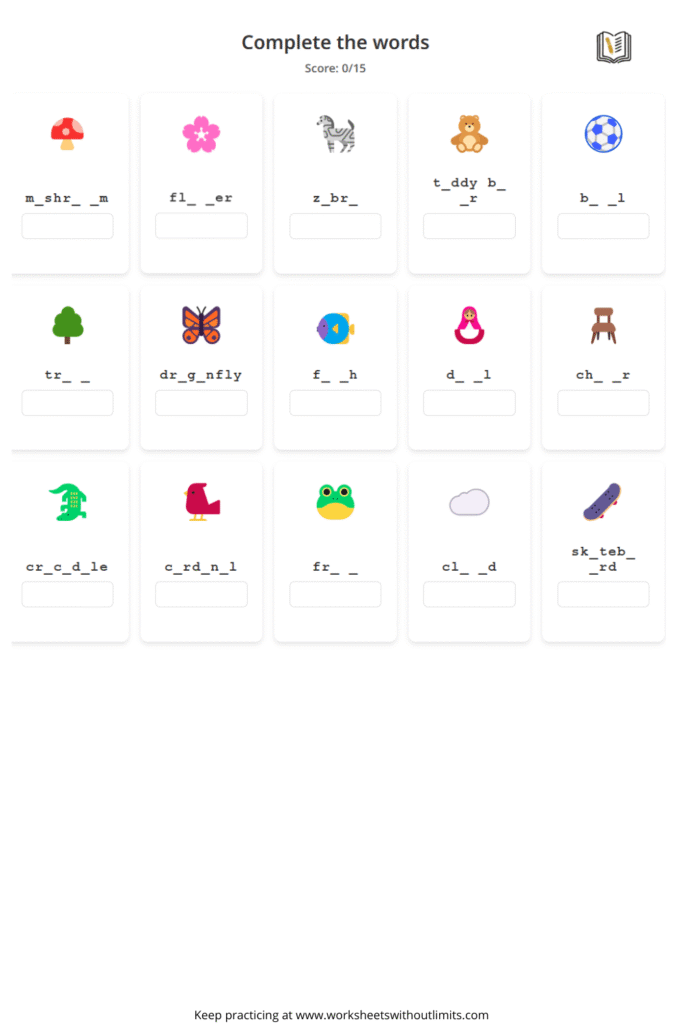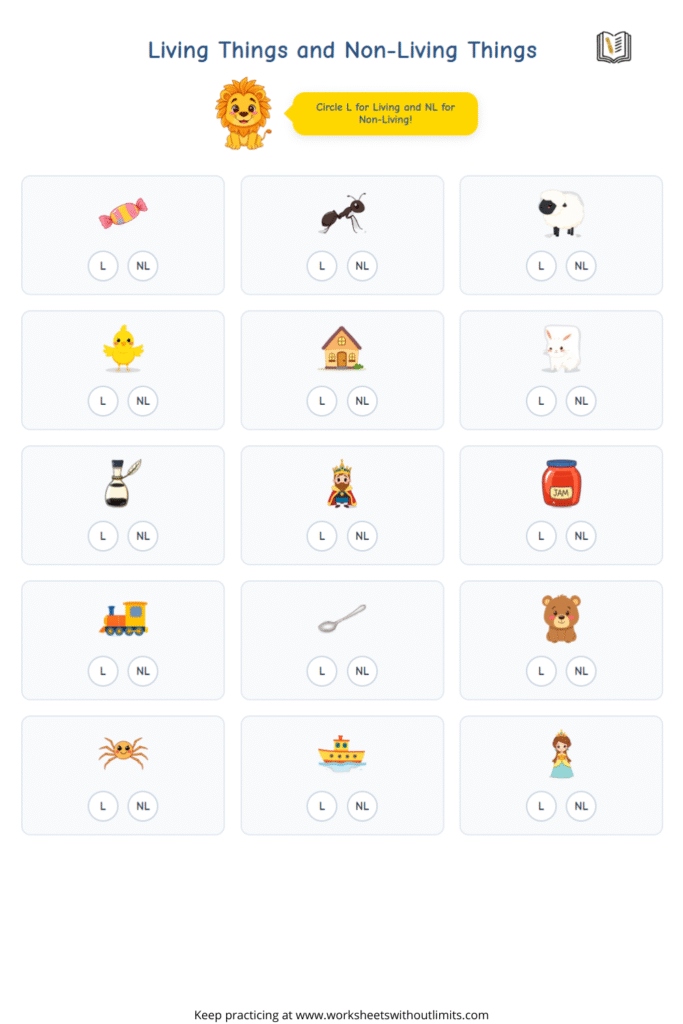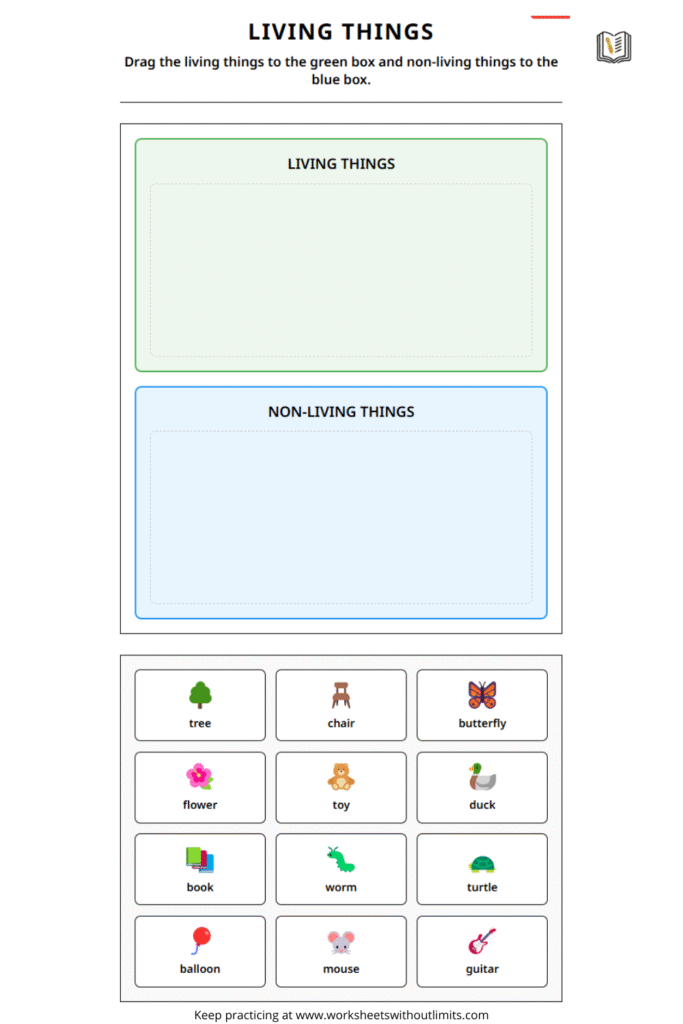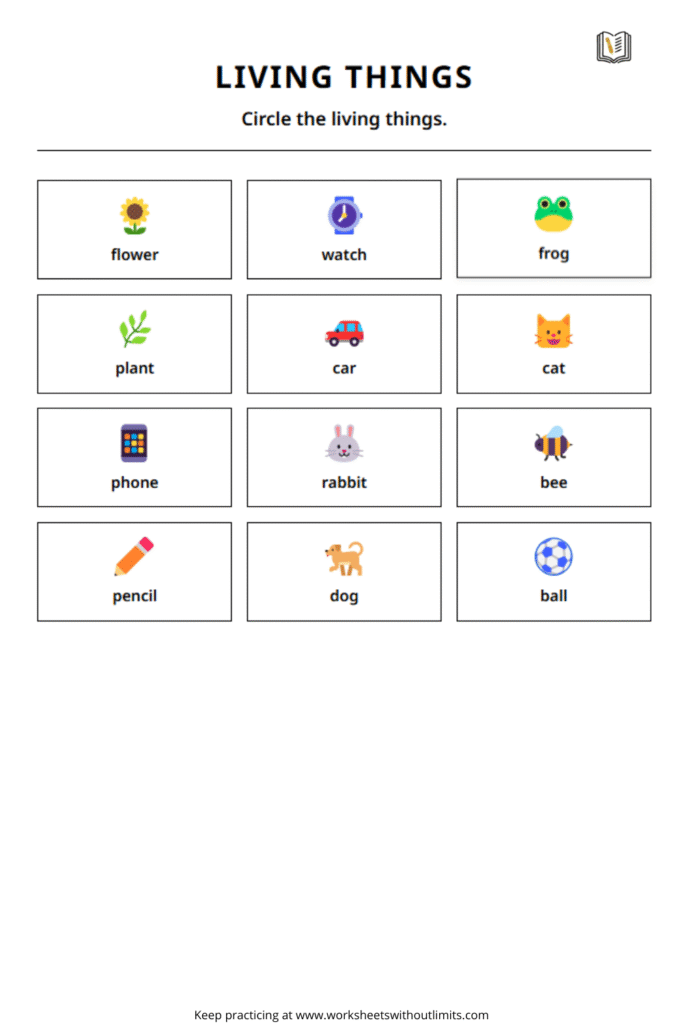Looking for unlimited living and non living things worksheets that are simple to use, printable, and ready to go? You've landed in the right place.
Here you'll find dynamic exercises focused on living and nonliving things—perfect for classrooms, homeschooling, or extra science practice at home. These worksheets help young learners understand one of the most fundamental concepts in life science: the difference between things that are alive and things that are not.
Students can complete the activities online, download and print them, or check their answers right away. It’s flexible and designed to work however you teach.
Living vs Non-Living Things
Living vs Non-Living Things
Drag each picture to the correct column
Living Things
Non-Living Things
What Are Living and Nonliving Things?
At its core, the concept of living and nonliving things helps children make sense of the world around them. It's about recognizing that not everything they see is alive—and that living things share certain basic characteristics.
Our living and nonliving worksheets guide students in identifying:
- Living things: Plants, animals, people—anything that grows, breathes, eats, moves, or reproduces.
- Nonliving things: Rocks, water, toys, furniture—objects that do not have life processes.
These concepts are introduced early in elementary science and form the building blocks for more advanced topics like ecosystems, habitats, and biology.
Our collection includes a wide variety of living and non living things worksheets, from matching and sorting activities to labeling diagrams and sentence completion tasks.
Why Is This Topic Important?
Understanding living things and non living things isn't just about memorizing examples—it’s about developing scientific thinking. Here's why it's so important for young learners:
- Encourages observation: Kids learn to ask questions about the world—"Is this alive?"—and use evidence to support their answers.
- Introduces scientific classification: This is often a child’s first encounter with grouping and sorting based on characteristics.
- Supports other subjects: Language skills, reading comprehension, and even math (through sorting and charting) are reinforced through science worksheets.
- Builds curiosity: Students become more engaged in nature, science, and the environment when they understand the life around them.
That’s why early exposure through tools like a living or non living worksheet can have a lasting impact.
What Students Are Expected to Learn
Through these living and nonliving things worksheets, students will begin to develop a set of core science skills. Here's what they’re typically expected to grasp by the end of their first lessons on this topic:
- Identify examples of living and nonliving things.
- Describe characteristics of living things, like growth, movement, reproduction, and response to the environment.
- Compare and contrast living and nonliving things using charts or diagrams.
- Explain why something is classified as nonliving, even if it moves (like a car or robot).
- Use simple reasoning and evidence from observation.
All of our living non living worksheets are structured to gradually build up these understandings, using visual aids, writing prompts, and hands-on tasks.
Tips for Teaching Living and Nonliving Concepts
If you’re teaching this concept in class or at home, here are a few ideas to make the learning experience more engaging and memorable:
- Start with real-world examples: Take students outside and let them observe items in the environment. Ask them to point out what's living and what's not.
- Use visuals: Picture cards and simple diagrams help younger learners absorb new information quickly.
- Encourage explanation: Don’t just accept an answer—ask students to say why something is living or nonliving.
- Discuss edge cases: Things like fire, robots, or clouds make great conversation starters and stretch student thinking.
- Incorporate sorting activities: Use cut-and-paste worksheets or physical object bins for students to group living and nonliving items.
Many of our living and non living worksheets are built with these techniques in mind. They balance independent work with guided thinking and discussion.
What’s Inside the Worksheets?
Our living and nonliving things worksheet collection includes a wide range of formats to suit different learning styles and classroom needs:
- Matching activities: Students draw lines from pictures to labels (living or nonliving).
- Cut and paste tasks: Great for interactive practice and fine motor development.
- Labeling diagrams: Helps reinforce vocabulary and science terminology.
- True or false: Students test their knowledge of life characteristics.
- Short writing prompts: Encourage explanations, such as "Why is a tree alive but a rock is not?"
Each worksheet can be printed and reused or used directly on digital platforms for remote or blended learning.
Free Downloadable Educational Worksheets
At the bottom of this page, you’ll find a growing collection of living and nonliving things worksheets in easy-to-use PDF format. These worksheets are:
- Free to download
- Cleanly formatted for classroom or home use
- Printable in black-and-white or color
- Accompanied by answer keys where appropriate
They’re ideal for:
- Elementary science lessons
- Sub plans
- Homework packets
- Homeschooling science units
- Science centers or group work
- ESL or ELL students
You can download just one or use the entire set for differentiated instruction or ongoing review.
Unlimited Practice That Grows With Your Students
The best part about these living and non living worksheets is that they’re unlimited. You can print them, reuse them, combine them, or create personalized packets based on your learners' needs.
These worksheets are perfect for:
- Reviewing before a quiz
- Practicing after a science read-aloud
- Completing after a nature walk
- Using in intervention settings
- Supplementing a science unit on habitats or ecosystems
They’re made to be flexible and practical, while still engaging and age-appropriate.
Find all the educational worksheets on our Pinterest account.

